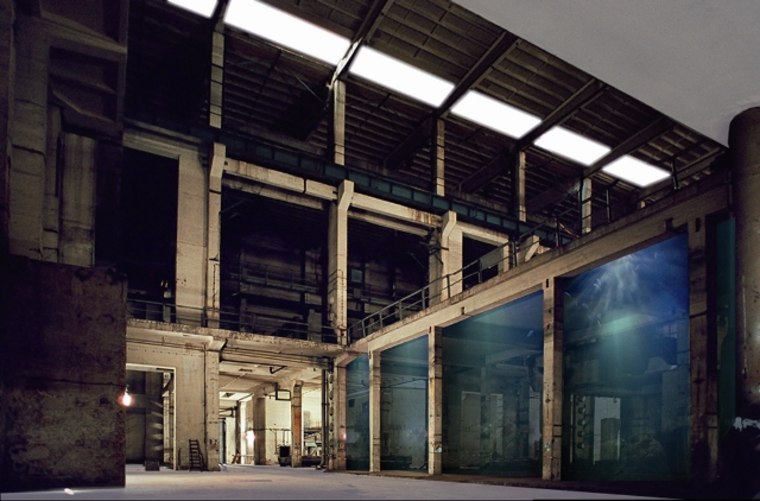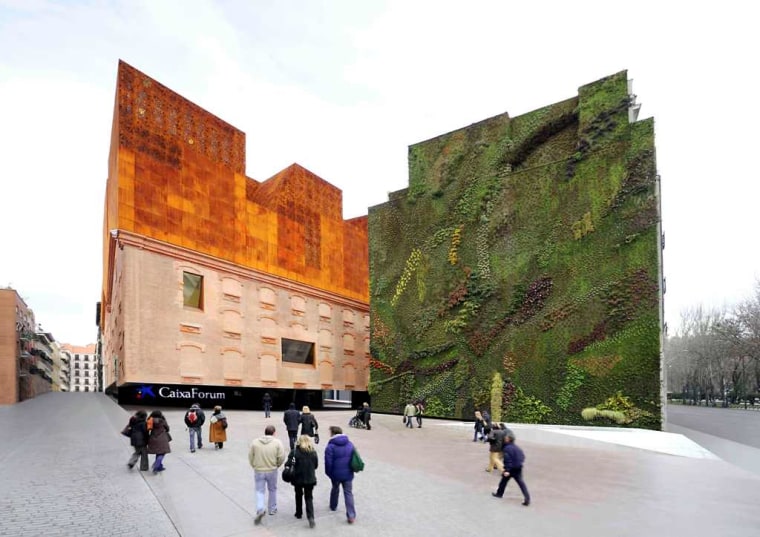Can gallery walls upstage art? You bet. The generic white room preferred by curators worldwide is designed with neutrality in mind. But when the exhibition space has a remarkable history of its own, the building itself can become the star attraction.
“Many people come to see the space, not the art,” is the wry complaint of Gertrud Peters, project manager of Kunst im Tunnel, located in Düsseldorf, Germany. Opened in February 2007, the sinuous concrete void between two freeway underpasses feels shaped by the flow of the traffic. For art and architecture aficionados this unintentional gallery space is fascinating, but it presents a unique challenge for curators.
“At first I thought of the room as my enemy. I tried to ignore it but found that was impossible. You have to deal with it,” says Peters. From dripping water and low flying aircraft, to freezing temperatures and industrial debris, none take easily to being tamed by art. Some are so inhospitable that perishable works like painting and photography can’t be shown. But in most cases these unusual spaces actually serve to enhance the art. “The power and significance of the artwork can be accentuated through the context and history of the building,” says Markus Richter, a curator of a gigantic former power station called Modem Berlin.
The symbiotic relationship between art and architecture has a well established history: In Paris, the Musée d'Orsay is the former Gare d'Orsay train station, while London’s Tate Modern rose from the ruins of the Bankside Power Station. The Modem Berlin takes the idea even further. “It is an industrial building which still shows its roots,” explains Richter. “We kept the roughness, the scratches and even a bit of the dirt from all the years of industrial use. We’re trying to keep the character and use the building itself as a kind of ‘megastructure’ sculpture,” he says, referring to a seminal ’70s art exhibition in which entire buildings were transformed into giant sculptures. (In September 2008, Modem Berlin will host Megastructures Reloaded, celebrating the movement.)
Taking our cue from Modem Berlin, we steered clear of sterile white boxes and sought spaces whose walls oozed history (and in one space in Copenhagen, water), where the gallery environments were provocative and thought-provoking in their own right. “There’s a fascination with industrial heritage and rawness and all things undefined and anarchic,” says Richter, who believes these kind of galleries satisfy the art public’s taste for the shock of the new.
Interestingly enough, some of the most unusual galleries (and almost half our list) were located in Germany, the epicenter of Europe’s contemporary art scene. “When the industrial century began, people made a lot of money and they wanted to invest in — and be entertained by — art,” explains Kunst im Tunnel’s Peters. As the core of the German economy moved from heavy industry to weighty ideas, a crop of new galleries replaced the now silent machines. “It’s mirroring the whole development of society,” says Richter, adding that the metamorphosis is also partially pragmatic. “You don’t have to do much to turn an industrial space into a gallery,” he says.

You do, however, have to do a lot to successfully exhibit in it. Some galleries had ceiling heights measuring a quarter mile while others spanned four football fields in area. Most, but not all, of the buildings had put their operational days behind them, such as La Piscine in Lille, France. The hydroelectric power stations/art galleries in Iceland still operate at full capacity. The issues faced by curators in such environments can be enormous. “You take on more of a producer role, just to get things done,” says Richter. But when it works, the rewards are equally monumental. Site-specific works that compliment the industrial gallery space often become career-making exhibitions.
Like Richter, we chose not to take the easy route and list the newest purpose-built contemporary art trophy halls. Beautiful though they were, the dramatic exteriors frequently concealed unchallenging white rooms. We were after the strange, exotic and iconic. Our list of repurposed buildings constituting Europe’s most unusual galleries are so idiosyncratic and fascinating that — like many visitors to Kunst im Tunnel — you may find yourself staring at the walls.
